Mandragora officinarum, commonly known as “Mandarke”, belongs to the family Solanaceae, Genus Mandragora. This remedy is prepared from the species Mandragora Officinarum, commonly known Mediterranean mandarke, native of Mediterranean climate.
Although Mandragora officinarum is a member of Solanaceae family and contains tropane atropine, hyoscyamine and scopolamine alkaloids, but due difference in their proportions, symptoms produced by Mandragora differ from other plants of the same family.
Other Species of the plant genus Mandragora:
- Mandragora autumnalis, mandrake or autumn mandrake
- Mandragora caulescens, Himalayan mandrake
- Mandragora officinarum, mandrake or Mediterranean mandrake,
- Mandragora turcomanica, Turkmenian mandrake
Ancient Uses of Mandrake
Mandrake roots are shaped like the human body. The Doctrine of Signatures claims that plants that resembled certain body parts could be used to treat ailments of those body parts. Therefore as a plant with the shape of a human body, the mandrake was believed to exercise control over the body; it could induce love or conception, or bring good fortune, wealth and power. A mandrake root, shaped like a baby slipped underneath one’s pillow every night, could help a woman conceive; or, shaped like a woman and carried in one’s pocket, could help a man secure his desired lover. Across Europe, men and women desperately sought out mandrake root to resolve their woes, and fraudsters counterfeited them out of carved bryony root to satisfy the growing demand.
Fig-1 Mandragora whole plant Fig-2 Mandragora roots.
Dioscurides, a first-century Greek physician, tells us that a wine cup full of mandrake root (that is, mandrake root boiled in wine) was used as an anaesthetic in ancient Rome. It was being given to patients before surgery by having them chew on pieces of root as anaesthetic.
Mandrake’s medicinal uses dates back to ancient times, with references to it being used as a cure to sterility .
The root can be very toxic, but is also used as an adnodyne to relieve and soothe pain (by lessening the sensitivity of the brain or nervous system) and for its soporific properties (inducing sleep).
Historically it has also been used as an emetic (induces vomiting) and purgative (induce bowel movements)
Mandragora Poisoning
People in Greece, especially those living in rural areas, frequently consume various plants and herbs as a vegetable meal or as an herbal remedy, which can lead to a number of adverse reactions or poisoning. The cases of two patients, who accidently consumed Mandragora instead of the commonly used eatable Borago officinalis, are described here.
A 47-year-old Caucasian Greek woman and a 48-year-old Caucasian Greek male from the same family were brought to the emergency services of Agia Barbara primary care health centre, on the island of Crete, Greece. Both patients exhibited a number of symptoms, which included nausea, dizziness, blurred vision, dryness of mouth, headache, instability in walking and vomiting. The reported symptoms raised a number of diagnostic questions, and the patients were asked what they had eaten. The male patient reported consuming a plant as a vegetable meal. We asked him to bring the plant to us, which we identified via figures found after an Internet search. They had accidentally consumed Mandragora instead of the commonly used eatable Borago officinalis.
When vital signs were measured, both patients were normotensive with normal temperature and oxygen saturation, but with raised pulse (190 beats per minute for the man and 170 for the woman) and respiratory rate (25 breaths per minute for the man and 20 for the woman). Flushed skin and reactive mydriasis were recorded. The ECG revealed in both patients supraventricular tachycardia (180 heart rate for the man and 173 heart rate for the woman).
Laboratory tests performed at the Hospital’s Emergency Department revealed a white blood cell count, urine and blood screening within normal limits. Only the liver transaminase tests such as aspartate transaminase (AST) and alanine transaminase (ALT) were raised (AST 75 U/L and ALT 65 U/L for the man, and AST 63 U/L and ALT 55 U/L for the woman). The liver transaminase tests were returned within normal limits in approximately 10 days. The neurologic symptoms previous mentioned were present in both patients only for the first two days. The reason that they stayed for so long in the hospital was mainly the persistent supraventricular tachycardia
In another study done on patients poisoned with Mandragora they evaluated 15 patients with poisoning by Mandragora autumnalis, distributed in two family groups. The latency period since the ingestion was 1-4 hours (Means = 2.7 +/- 0.9). All patients had blurred vision and dryness of mouth, nine (60%) had difficult micturition, nine dizziness, nine headache, eight (53%) vomit, two difficulty swallowing and two abdominal pain. There was no correlation between the latency period and the clinical severity. Blushing, areactive mydriasis and tachycardia were found in all, dry skin and mucosae in 14 (93%), hyperactivity/hallucination in 14 and agitation/delirium in nine (60%).
Proving of Mandragora officinalis
Not much data is available on the proving of Mandragora officinalis. Most of all the early provings were done with the mother tincture prepared from the arial part of the plant except the roots. First HC Allen proved Mandragora, then a very short earlier proving by LC Dufresne (1834), through the smelling of the fresh juice of the leaves, and by BW Richardson, in 1874, with a mother tincture prepared from the aerial part of the plant, without the root. Clarke collected information from these sources.
A new series of provings were performed in the middle of the 20th century by Metzger (1951) in Stuttgart, on 30 provers, all doctors, employing dilutions 2, 4 and 6, and by Raeside (7), who performed in 1963-1964, three provings that verified the symptoms reported by Metzger and added others on pain in the limbs.
The most striking results of Metzger’s proving was that no definite and striking symptoms were noted on the central nervous system, which are commonly present and characteristic of the alkaloids of Solanaceae, like mania, violence, anger, destructiveness etc.
Several of the provers were observed to be sad, depressed with characteristic sensitivity to noise.
The greatest part of the provings is taken up with disturbances of the motility and of the secretions of the gastro-intestinal canal and bile ducts. Two Mandragora provers referred to this modality as a hunger pain which was ameliorated by eating. Much more significant, a singular modality, which has been brought out by the Mandragora provings, is that the sensation of fullness, pressure and eructations are ameliorated by eating. On the advice of one of the provers who had observed this peculiar syndrome on himself Mandragora 6x was given to a patient with all the signs and symptoms of almost complete cicatricial stenosis of the bulbus duodeni. The improvement was impressive and lasting over the many months of subsequent observation. Just as with Belladonna, so with Mandragora, one cannot speak one-sidedly of spasms in the smooth musculature. Colics certainly do occur, but atony comes out just as much in the symptoms, for instance in that “soft stools are evacuated only with difficulty and with much pressing“. But this is a symptom which occurs with many remedies and hence is not very distinctive. One peculiar modality, like the one mentioned above, makes up for a whole register of commonplace symptoms in the selection of the remedy. Heart symptoms which were very frequently noted in the proving, oppression, pressure, palpitation, stitches, constriction and dyspnea, appear to be part of the gastrocardial syndrome.
Drug Picture of Mandragora Officinalis
Mandragora officinalis is not a very well proved drug, so the known symptomatology of this drug is not very vast.
Mandragora officinalis belongs to the plant family Solanaceae and contains the alkaloids atropine, hyoscyamine and scopolamine which are similar to the alkaloids of Belladonna, Stramonium and Hyoscyamus, but due to differences in the proportions of these alkaloids mandragora presents different symptomatology. Violence, delusions, manias, destructiveness, fears are not very marked in this remedy. Instead of these, there is sadness, dullness and melancholic states are found in patients.
Physically there is marked yellow and white discolorations that are usually associated with symptoms such as in skin, tongue, sclera etc, and stool colour is also white or light coloured.
Mind – sadness, depressed with irresistible desire for sleep. Sadness is followed by frequent urination and sadness ameliorated by urination.
Patient is very sensitive to noise and odors.
Dreams are frightful, anxious and unpleasant. Dreams of accidents, murder, plane crash etc.
Patient has delusion that he is possessed someone within him.
All the unpleasant symptoms go off at night in bed, and are succeeded by a gentle perspiration.
According to Boericke, Mandrgora has antiperiodic properties like China and Aranea and restless excitability with bodily weakness, so it is used in epilepsy and hydrophobias if other symptoms match.
Head – there is generalised aversion to and aggravation from alcohol and tobacco, so the headaches are due to alcoholic drinks or from tobacco, even smell of tobacco also causes headache. Headaches with gastric derangements, with fullness of abdomen. Another keynote is coldness of extremities with headache.
Here the modalities are somehow similar to Belladonna headaches, like aggravation from noise, light, motion etc but there is strong amelioration by eating, which is not seen in Belladonna headaches.
In Mandragora headaches, there is aggravation from pressure and there is amelioration also.
Eyes – As I mentioned earlier that there is generalised yellow or white discolouration, sclera also become yellow. Tendency for styes.
Mouth – Tongue discolouration white. Dryness of mouth. Haemorrhage from gums. Apthae, dryness of mouth with numbness is the peculiar of Mandragora.
Abdomen – Mandragora chiefly acts on GIT and its pathology usually begins from the gastrointestinal tract i.e., there is gastric headache, and the symptoms like oppression, pressure, palpitation, stitches, constriction and dyspnoea, appear to be part of the gastrocardial syndrome. In Mandragora, there are disturbances of the motility and of the secretions of the gastro-intestinal canal and bile ducts, resulting in colic, sensation of fullness, pressure and eructations. A much more significant modality which has been brought out by the Mandragora provings is that these sensations of fullness, pressure and eructations are ameliorated by eating. In fact there is generalised amelioration by eating in Mandragora.
In colic, backward bending ameliorates the pain which is similar to Belladonna colic and other than these two of Solanaceae family medicines, this modality also seen in Dioscorea which contains the alkaloid saponin and this saponin belongs to the tropane group of alkaloids similar to solanaceae family.
There is seasickness found in Mandragora. Other remedies of the same family are Belladonna and Tabacum which are frequently used for motion sickness.
Desire for sweet and aggravation from sweet. Chronic liver inflammation which is responsible for generalised yellowness or white discolouraion. Nausea and gastric disturbance in chronic drunkards as there is generalised aversion and aggravation to tobacco and alcohol. Nausea with mental symptoms.
Rectum – constipation, insufficient unrefreshing stool. Diarrhoea after fatty food.
Stool – very peculiar white or light coloured stool. Hard stool
Urine – urination frequent, profuse specially sadness during and after. Characteristically sadness relived by profuse urination.
Female – In ancient times, Mandragora was frequently used to induce conception and to treat many gynaecological complains. Mandragora is used in cases of retention of dead foetus. Leucorrhoea is yellowish-white.
Skin – dryness of skin with yellow discolouration. Perspiration at night and it relieved all mental complaints.
Mandragora officinarum “Quick Review”
- Sadness, melancholic. Sadness with profuse urination and sadness relived after urination.
- Great desire for sleep.
- Generalised yellowish discolouration i.e. of sclera, face, tongue, skin, and discharges are also yellowish or white like leucorrhoea and stool light coloured.
- All complaints relived after eating, such as headache, eructations, abdomen heaviness etc.
- Dryness of mouth and skin and dryness associated with numbness of the part.
Rubrics covered by Mandragora officinarum
[Complete ] [Mind]Concentration (see comprehension thinking):Difficult:
[Complete ] [Mind]Delusions, imaginations:Possessed, he or she is:
[Complete ] [Mind]Dreams:Accidents, of:
[Complete ] [Mind]Dreams:Anxious:
[Complete ] [Mind]Dreams:Frightful:
[Complete ] [Mind]Dreams:Murder:
[Complete ] [Mind]Dullness, sluggishness, difficulty of thinking and comprehending:
[Complete ] [Mind]Euphoria:Alternating with:Sadness:
[Complete ] [Mind]Hydrophobia:
[Complete ] [Mind]Insanity, madness:
[Complete ] [Mind]Irresolution, indecision:
[Complete ] [Mind]Kleptomania:
[Complete ] [Mind]Memory:Weakness, loss of:
[Complete ] [Mind]Sadness, despondency, depression, melancholy:Urination:Amel.:
[Complete ] [Mind]Sadness, despondency, depression, melancholy:Urination:Frequent, followed by:
[Complete ] [Mind]Sensitive, oversensitive:Noise, to:
[Complete ] [Mind]Sensitive, oversensitive:Odors, to:
[Complete ] [Head Pain]General:Morning:Agg.:
[Complete ] [Head Pain]General:Alcoholic drinks, from:From:
[Complete ] [Head Pain]General:Bending head:Forward:Agg.:
[Complete ] [Head Pain]General:Cold:Applications:Amel.:
[Complete ] [Head Pain]General:Congestive:
[Complete ] [Head Pain]General:Eating:Amel.:After:
[Complete ] [Head Pain]General:Heat:During:
[Complete ] [Head Pain]General:Light, from:Agg, in general:
[Complete ] [Head Pain]General:Motion:Agg.:
[Complete ] [Head Pain]General:Pressure, external:Agg.:
[Complete ] [Head Pain]General:Pressure, external:Amel.:
[Complete ] [Head Pain]General:Sun, exposure to:Agg.:
[Complete ] [Head Pain]General:Tobacco:Smell of, agg.:
[Complete ] [Head Pain]General:Tobacco:Smoking:Agg.:
[Complete ] [Head Pain]General:Urination:Amel.:During:
[Complete ] [Head Pain]Localization:Occiput:
[Complete ] [Head Pain]Localization:Occiput:Extending:Forward
[Complete ] [Face]Discoloration:Dirty looking:
[Complete ] [Face]Discoloration:Pale:
[Complete ] [Face]Discoloration:Red:
[Complete ] [Face]Discoloration:White:Spots:
[Complete ] [Face]Eruptions:Herpes:
[Complete ] [Face]Greasy:
[Complete ] [Face]Itching:
[Complete ] [Eye]Discoloration:Yellow:
[Complete ] [Eye]Inflammation:Conjunctivae:
[Complete ] [Eye]Styes:
[Complete ] [Mouth]Aphthae:
[Complete ] [Mouth]Discoloration:White:
[Complete ] [Mouth]Discoloration:White:Tongue:
[Complete ] [Mouth]Dryness:
[Complete ] [Mouth]Hemorrhage:Gums:
[Complete ] [Mouth]Numbness:Tongue:
[Complete ] [Mouth]Pain:Burning, raw, smarting:Tongue:
[Complete ] [Mouth]Pain:Burnt, as if:Tongue:
[Complete ] [Mouth]Salivation:
[Complete ] [Stomach]Appetite:Easy satiety:
[Complete ] [Stomach]Emptiness, weak feeling, faintness, goneness, hungry feeling:Eating:Agg.:After:
[Complete ] [Stomach]Emptiness, weak feeling, faintness, goneness, hungry feeling:Eating:Amel,:After:
[Complete ] [Stomach]Emptiness, weak feeling, faintness, goneness, hungry feeling:Nausea:During:
[Complete ] [Stomach]Eructations:General:Eating:Amel, after:
[Complete ] [Stomach]Nausea:Seasickness:Eating again after vomiting:
[Complete ] [Stomach]Pain:General:Bending:Backward amel.:
[Complete ] [Stomach]Pain:General:Eating:Amel.:
[Complete ] [Stomach]Pain:Sore, bruised, beaten, tenderness:
[Complete ] [Abdomen]Distension:Eating:After:
[Complete ] [Abdomen]Distension:Motion:Amel.:
[Complete ] [Abdomen]Distension:Pain in heart, with:
[Complete ] [Abdomen]Distension:Hypogastrium:Extending to right shoulder:
[Complete ] [Abdomen]Distension:Ileo-caecal region:
[Complete ] [Abdomen]Inflammation, peritonitis, enteritis:
[Complete ] [Abdomen]Inflammation, peritonitis, enteritis:Liver:Chronic:
[Complete ] [Abdomen]Pain:Burning:Gallbladder, region of:
[Complete ] [Abdomen]Pain:Stitching, sticking, etc.:Gallbladder, region of:
[Complete ] [Abdomen]Pancreas, ailments of:
[Complete ] [Rectum]Constipation:Insufficient, incomplete, unsatisfactory stools:
[Complete ] [Rectum]Constipation:Strain, must:
[Complete ] [Rectum]Diarrhea:Morning:
[Complete ] [Rectum]Diarrhea:Food:Fat, after:
[Complete ] [Rectum]Hemorrhage:Anus, from:
[Complete ] [Rectum]Involuntary stool:
[Complete ] [Rectum]Constipation:Insufficient, incomplete, unsatisfactory stools:
[Complete ] [Rectum]Constipation:Strain, must:
[Complete ] [Rectum]Diarrhea:Morning:
[Complete ] [Rectum]Diarrhea:Food:Fat, after:
[Complete ] [Rectum]Hemorrhage:Anus, from:
[Complete ] [Rectum]Involuntary stool:
[Complete ] [Bladder]Urination:Frequent:
[Complete ] [Bladder]Urination:Frequent:Sadness, after:
[Complete ] [Bladder]Urination:Involuntary:
[Complete ] [Bladder]Urination:Retarded, must wait for urine to start:
[Complete ] [Bladder]Urination:Retarded, must wait for urine to start:Last few drops:
[Complete ] [Female Genitalia]Fetus:Dead:Retained:
[Complete ] [Female Genitalia]Leucorrhea:General:Menses:Before:
[Complete ] [Female Genitalia]Leucorrhea:Brown:
[Complete ] [Female Genitalia]Leucorrhea: Offensive:Menses:Before:
[Complete ] [Female Genitalia]Leucorrhea:White:
[Complete ] [Female Genitalia]Leucorrhea:Yellow:
[Complete ] [Female Genitalia]Menses:Absent, amenorrhea:
[Complete ] [Female Genitalia]Menses:Clotted, coagulated:
[Complete ] [Female Genitalia]Menses:Dark:
[Complete ] [Female Genitalia]Menses:Profuse:
[Complete ] [Female Genitalia]Menses:Thick:
[Complete ] [Female Genitalia]Sexual:Desire:Diminished:
[Complete ] [Female Genitalia]Sexual:Desire:Increased:
[Complete ] [Extremities]Coldness:Headache, during:
[Complete ] [Extremities]Cramps:Hand:Writing , piano or violin playing, typists:
[Complete ] [Extremities]Cramps:Leg:Calf:
[Complete ] [Extremities]Discoloration:Pale:
[Complete ] [Extremities]Discoloration:Pale:Upper limbs, with headache:
[Complete ] [Extremities]Discoloration:White:Headache, during:
[Complete ] [Extremities]Eruptions:Urticaria:Hand:
[Complete ] [Extremities]Numbness, insensibility:Upper limbs:
[Complete ] [Extremities]Numbness, insensibility:Fingers:
[Complete ] [Extremities]Varices:Leg:
[Complete ] [Skin]Anesthesia:
[Complete ] [Skin]Dry:Inability to perspire:
[Complete ] [Skin]Eruptions:Herpetic:Zoster, zona:
[Complete ] [Skin]Inflammation:
[Complete ] [Generalities]Night, nine p.m. five a.m.:Agg.:
[Complete ] [Generalities]Night, nine p.m. five a.m.:Amel.:
[Complete ] [Generalities]Anesthesia, insensibility:
[Complete ] [Generalities]Bending, turning:Amel.:Backward:
[Complete ] [Generalities]Bending, turning:Amel.:Double:
[Complete ] [Generalities]Convulsions:Epileptic:
[Complete ] [Generalities]Eating:After:Agg.:
[Complete ] [Generalities]Eating:After:Amel.:
[Complete ] [Generalities]Food and drinks:Alcohol, alcoholic drinks:Agg:
[Complete ] [Generalities]Food and drinks:Alcohol, alcoholic drinks:Aversion:
[Complete ] [Generalities]Food and drinks:Cheese:Desires:
[Complete ] [Generalities]Food and drinks:Coffee:Agg:
[Complete ] [Generalities]Food and drinks:Coffee:Aversion:
[Complete ] [Generalities]Food and drinks:Fats and rich food:Agg:
[Complete ] [Generalities]Food and drinks:Fats and rich food:Aversion:
[Complete ] [Generalities]Food and drinks:Tobacco:Aversion to:
[Complete ] [Generalities]Food and drinks:Wine:Aversion:
[Complete ] [Generalities]Inflammation:Chronic:Hepatitis:
[Complete ] [Generalities]Inflammation:Joints, arthritis:Chronic, arthritis deformans:
[Complete ] [Generalities]Numbness:Externally:
[Complete ] [Generalities]Stool:Amel.:After:
[Complete ] [Generalities]Tobacco:Agg.:
[Complete ] [Generalities]Tobacco:Aversion

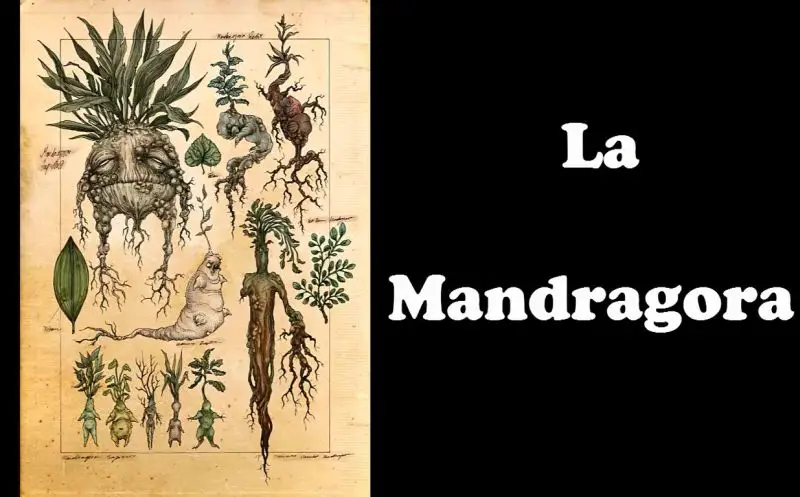
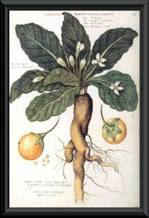

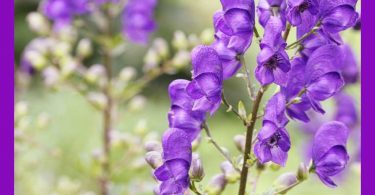
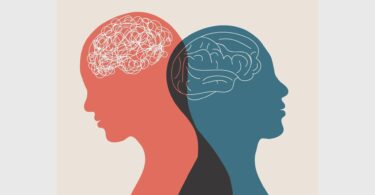
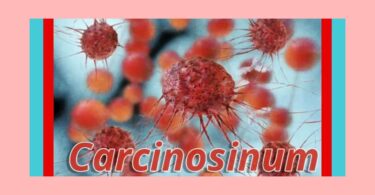

Nancy Herrick conducted a proving of Mandragora quite some time ago. That proving would add to this article.